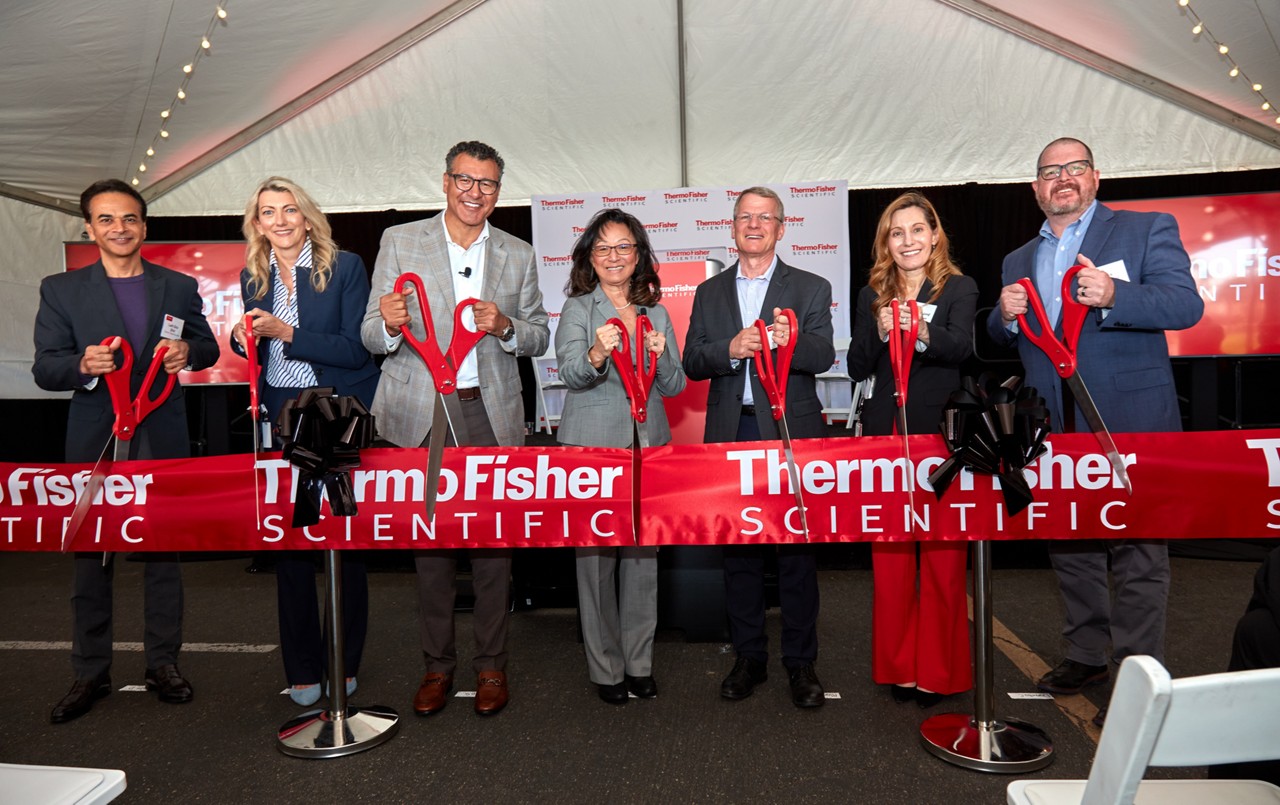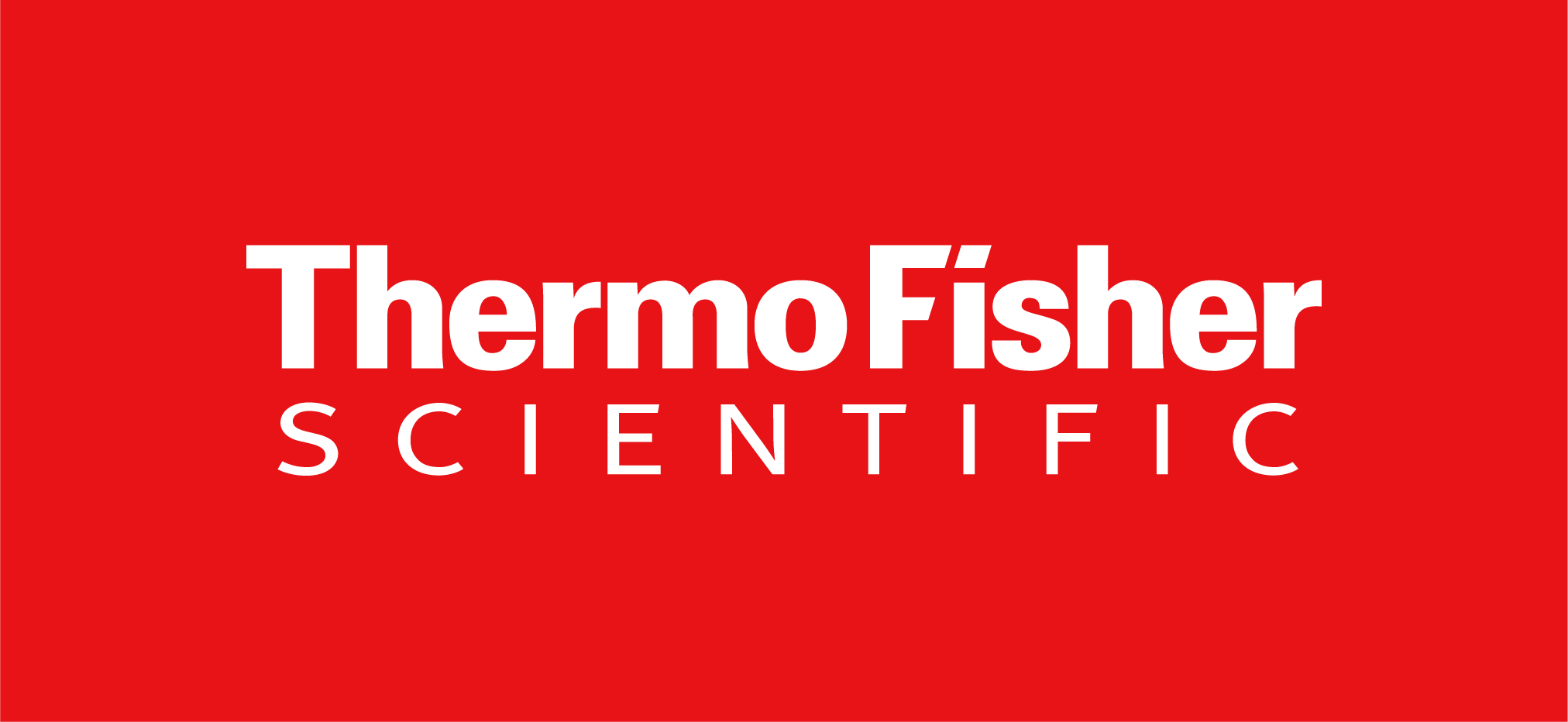By Terri Somers
Senior Manager, Global PR and StoryLab
 Jasmine Padilla, a process development scientist, provides an overview of the ATxCC’s process development instrumentation workflow during tours of the new collaboration center.
Jasmine Padilla, a process development scientist, provides an overview of the ATxCC’s process development instrumentation workflow during tours of the new collaboration center.
"By fostering collaboration and innovation, the center is poised to play a pivotal role in helping to advance cell therapies, ultimately improving patient lives,” said Betty Woo, vice president, cell, gene and advanced therapies, Thermo Fisher Scientific.
Cell therapies use a patient’s own cells that have been reprogrammed into supercharged fighting units to stop disease progression. These therapies have been in development for several decades, with one of the earliest forms, bone marrow transplantation, beginning in the late 1950s.
Significant advances have been made in the last few decades, resulting in global regulatory agencies approving 71 cell therapies and 33 gene therapies, according to the latest Citeline quarterly report for the American Society of Gene and Cell Therapy. More than 30 of those have been approved by the FDA.
According to the report, in the global pipeline, including in development and currently enrolled in clinical trials, there are another 2,154 gene therapies and 966 non-genetically modified cell therapies.
 Thermo Fisher Scientific leaders celebrate the opening of the ATxCC (from left to right): Lalit Dhir, VP, Strategy, Innovation and Business Development; Tiffani Manolis, Vice President and General Manager, Cell Biology; John Sos, Senior Vice President and President, Life Sciences Solutions; Betty Woo, Vice President, Cell, Gene and Advanced Therapy; Alan Sachs, Chief Medical Officer; Daniella Cramp, Senior Vice President and President, BioProduction; Ross Whittaker, Sr. Director and General Manager, Cell and Gene Therapy.
Thermo Fisher Scientific leaders celebrate the opening of the ATxCC (from left to right): Lalit Dhir, VP, Strategy, Innovation and Business Development; Tiffani Manolis, Vice President and General Manager, Cell Biology; John Sos, Senior Vice President and President, Life Sciences Solutions; Betty Woo, Vice President, Cell, Gene and Advanced Therapy; Alan Sachs, Chief Medical Officer; Daniella Cramp, Senior Vice President and President, BioProduction; Ross Whittaker, Sr. Director and General Manager, Cell and Gene Therapy.
The global cell and gene therapy sector is valued at $20.5 billion and is projected grow to a $128.8 billion value by 2035 at a compound annual growth rate of about 18.2 percent.
Investment and overcoming the rigorous demands of a clinical trial are not the only hurdles to ensuring patients gain access to these new therapies. Cell therapy developers must also figure out how to transform these more personalized therapies, which require a costly process of cell extraction, reprogramming, amplification and re-infusion, into something closer to an off-the-shelf product.
Dozens of Thermo Fisher collaborators joined the celebratory ribbon-cutting ceremony and toured the new facility. Some spoke about the need for collaboration with proven experts in process engineering, manufacturing and automation to advise drug developers on methods to scale production of these new therapies from a limited number of doses needed for clinical trials to many thousands of doses needed for commercialization.
These advances are expected to reduce costs and make new therapies accessible to more patients.
The new ATxCC joins a network of similar Thermo Fisher facilities already open in Singapore and Korea, with a fourth scheduled to open in Philadelphia later this year.
“These centers offer our customers early access to state-of-the-art technologies, allowing them to leverage our expansive product and process optimization knowledge,” said John Sos, senior VP and president of life sciences solutions at Thermo Fisher Scientific.
The collaboration centers also provide dedicated regulatory, quality and partnership management teams to help developers advance their cell therapy programs by addressing new challenges and enabling platform-specific support, he said.
“Innovation is at the core of what we do, and our collaboration centers are a testament to this,” Sos said.

